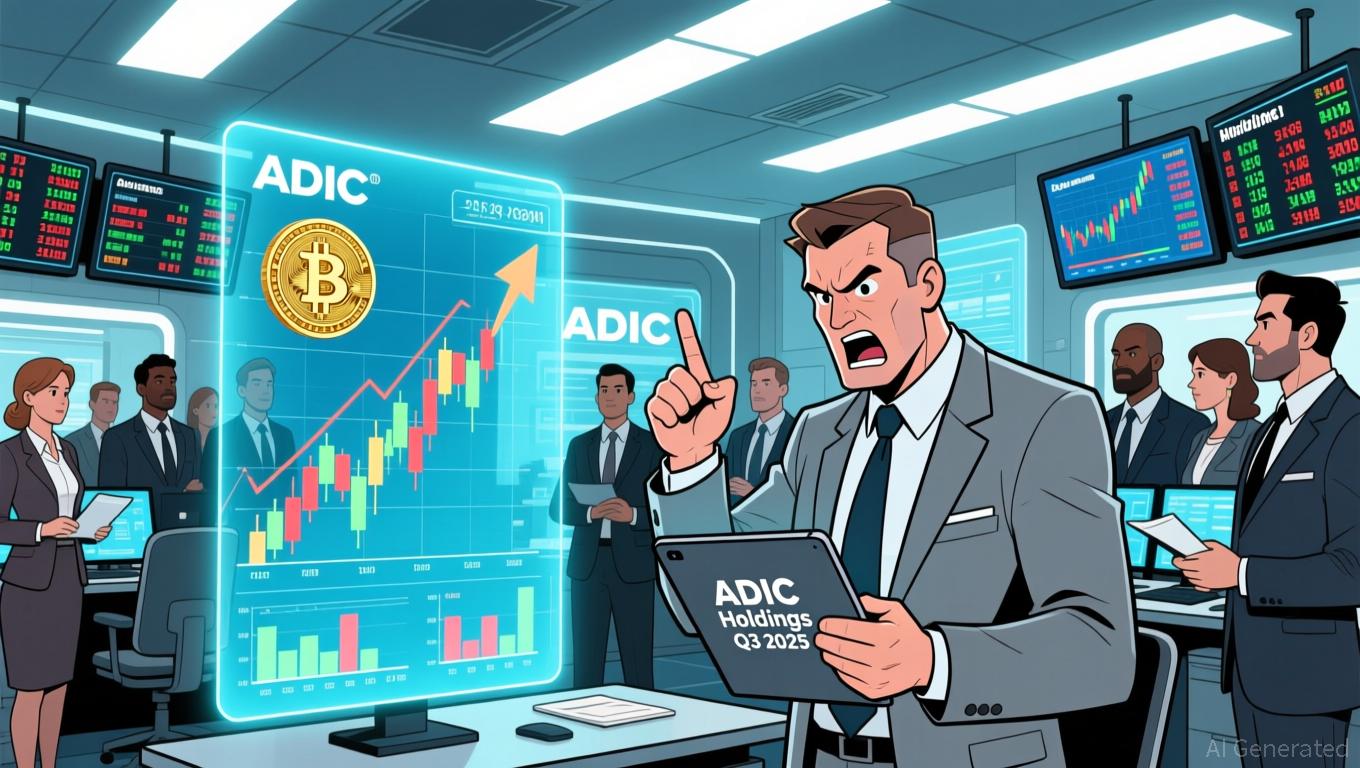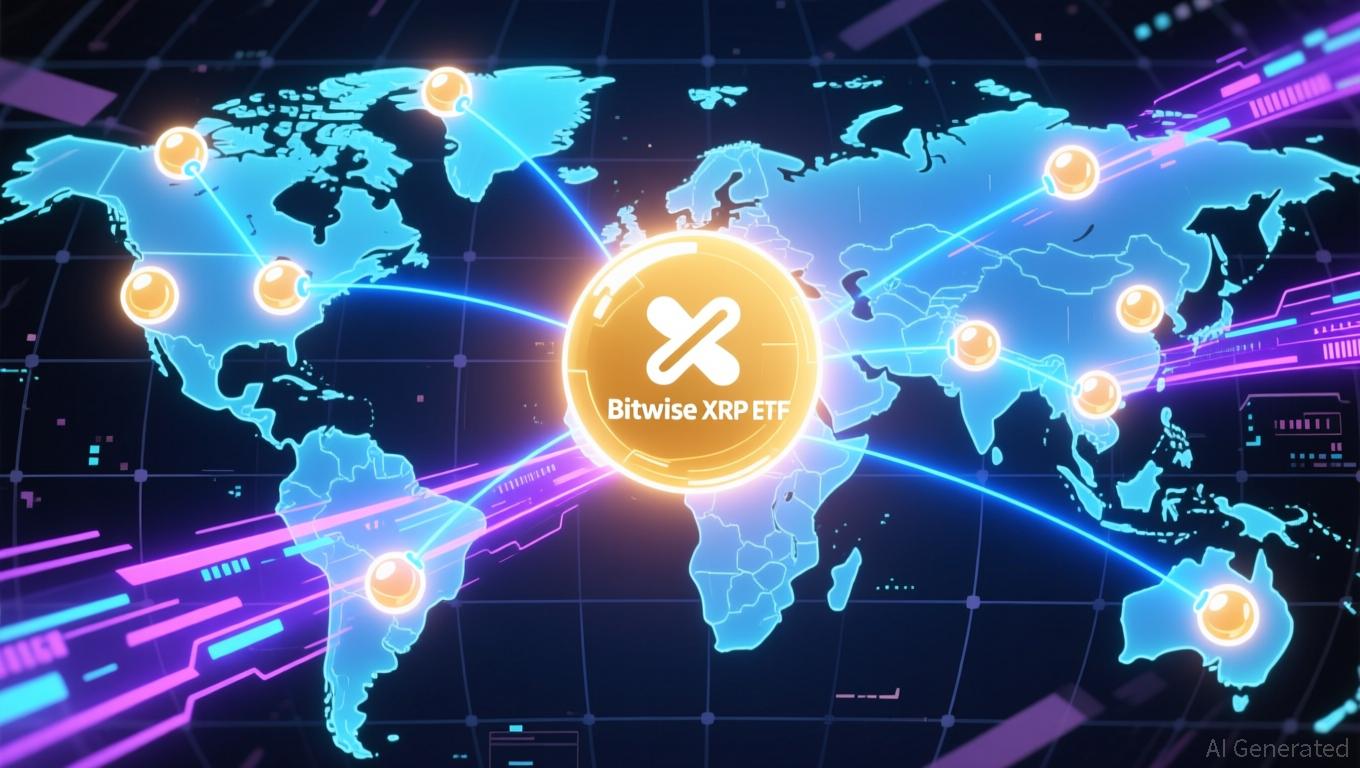The Emergence of Hyperliquid and What It Means for Decentralized Trading
- Hyperliquid redefines decentralized trading via HyperEVM blockchain and HyperBFT consensus, challenging speed-decentralization trade-offs. - HIP-3 growth mode slashes taker fees by 90%, driving $10B+ daily volumes and niche asset liquidity diversification. - $4.9M bad debt incident highlights high-leverage risks, prompting 30-day fee locks and stricter market parameters. - Competitors like Aster temporarily outpace Hyperliquid's volume, but its structural innovation positions it as a long-term DeFi leade
Structural Shifts in On-Chain Liquidity Provision
Hyperliquid’s liquidity model is fundamentally different from Automated Market
Importantly, Hyperliquid’s dual-blockchain structure and HyperBFT consensus resolve the persistent challenge of balancing speed and decentralization in blockchain systems. By delivering finality in under a second while maintaining a diverse validator set, Hyperliquid ensures its order book remains both scalable and secure—something that rivals like
User Acquisition and Tokenomics: A New Paradigm
Hyperliquid’s achievements are not just the result of technical advancements but also stem from its user-focused tokenomics. The platform allocates 70% of its token supply back to users, aligning the interests of the protocol with its community
Nevertheless, this swift expansion has brought its own set of issues. In November 2025, Hyperliquid suffered a $4.9 million loss due to a market manipulation incident involving the POPCAT token, marking the third such occurrence that year
Competitive Dynamics and Future Implications
Although Hyperliquid has established a distinct position in decentralized trading, it faces strong competition from platforms like SunPerp and Aster, which use integrated resources and cost efficiencies to improve user experience
For those investing in this space, the message is clear: the next phase of decentralized trading will be shaped by platforms that successfully blend speed, decentralization, and user rewards. Hyperliquid’s HIP-3 growth strategy and HyperBFT consensus offer a model for achieving this equilibrium, but also highlight the necessity of prioritizing scalability and security alongside user growth. As the sector evolves toward comprehensive ecosystem development and sustainable token models, Hyperliquid’s adaptability will be crucial to its future prospects.
Conclusion
Hyperliquid’s emergence illustrates the major changes taking place in on-chain liquidity and user engagement in 2025. By reinventing decentralized trading through low-cost incentives, advanced consensus technology, and community-driven tokenomics, Hyperliquid has become a key force in DeFi’s ongoing transformation. However, the platform’s challenges—especially in managing risks tied to high leverage—emphasize the ongoing need for innovation and caution. For investors, Hyperliquid’s journey offers both promising opportunities and important lessons in a market where technological flexibility and user confidence are essential.
Disclaimer: The content of this article solely reflects the author's opinion and does not represent the platform in any capacity. This article is not intended to serve as a reference for making investment decisions.
You may also like
Fed's Division on Rate Cuts Widens as October Employment Figures Disappear, Obscuring Policy Direction
- U.S. Bureau of Labor Statistics cancels October jobs report, leaving unemployment and nonfarm payroll data missing due to government shutdown. - Fed faces policy uncertainty as internal divisions deepen over rate cuts, with October meeting minutes revealing stark disagreements on 2025 reductions. - Delayed November report and missing household survey data complicate labor market assessment, risking misaligned inflation and employment policies. - Trump administration pressures Fed for lower rates while ma

CEO Offers $1 Million Reward, Urging Blockchain Developers to Surpass Supra's EVM
- Supra launches MultiVM TestNet and expands its $1M SupraEVM Speed Challenge to validate its parallel EVM execution engine's performance. - CEO Joshua Tobkin offers personal $SUPRA tokens as rewards for teams surpassing SupraBTM's benchmarks through reproducible open-source testing. - The platform integrates execution, consensus, and infrastructure via AutoFi and PoEL to address blockchain scalability limits in DeFi, gaming, and AI. - CBO Jon Jones emphasizes Supra's architecture as "testable against any

Bitcoin Updates Today: Abu Dhabi's Bold Move on Bitcoin: Digital Gold Approach Challenges Market Fluctuations
- Abu Dhabi's ADIC tripled its IBIT stake to $518M in Q3 2025, viewing Bitcoin as "digital gold." - The move aligns with global SWFs' trend, as UAE advances crypto-friendly regulations and economic strategy. - Despite 23% BTC price drop post-purchase, ADIC's position signals institutional resilience amid volatility.

XRP News Today: Bitwise ETF Greenlight Marks Major Regulatory Progress for Crypto During Market Fluctuations
- SEC approves Bitwise 10 Crypto Index ETF, expanding U.S. crypto investment options with diversified exposure to 10 cryptocurrencies. - Bitwise launches XRP ETF (ticker: XRP) to enable cross-border transactions via XRP Ledger, emphasizing tokenized asset potential. - Bitcoin ETFs face $3.3B November outflows amid waning institutional demand, while Solana ETFs attract $420M in 16-day inflows. - Competitors like BlackRock file staked Ethereum ETFs as crypto products navigate regulatory clarity and macroecon
